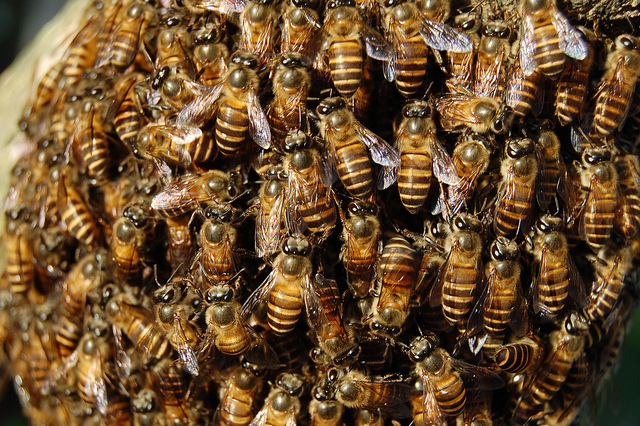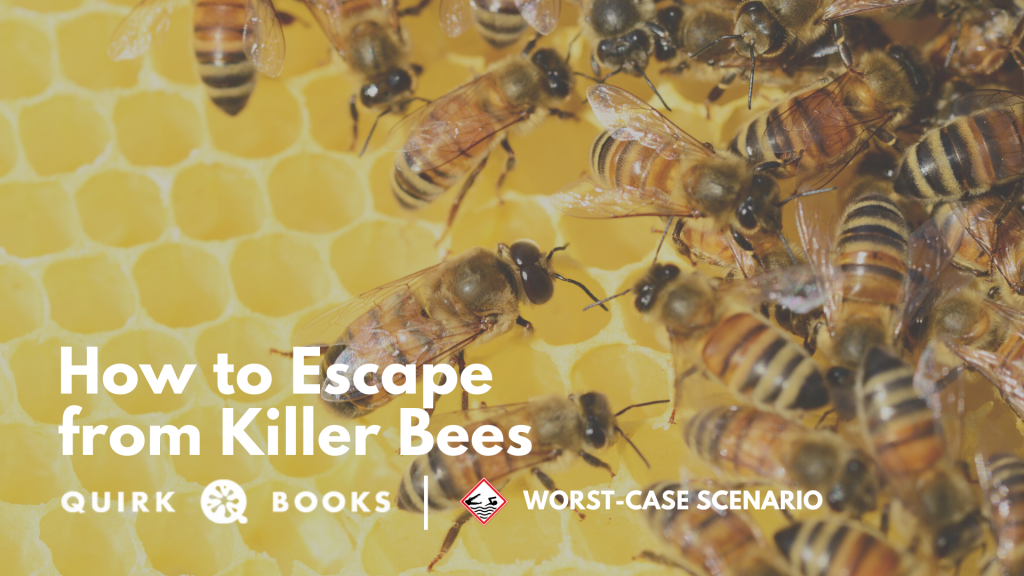Worst-Case Wednesday: How to Escape From Killer Bees
Just looking at this is giving me hives. Get it?! Hives??
When a truck carrying up to 20 million bees (?!?!) overturned in Delaware last month, the news was all abuzz (sorry, I had to) and this week, a swarm of the buzzing pests had to be removed from the lanes of the Pennsylvania turnpike so drivers could pass through sting-free. Who knows where they will turn up next?
It sounds like a bad horror movie, but you can be prepared with the help of The Worst-Case Scenario Survival Handbook’ guide on How to Escape From Killer Bees.
1. If bees begin flying around and/or stinging you, do not freeze.
Run away; swatting at the bees only makes them angrier.
2. Get indoors as fast as you can.
3. If no shelter is available, run through bushes or high weeds.
This will help give you cover.
4. If a bee stings you, it will leave its stinger in your skin.
Remove the stinger by raking your fingernail across it in a sideways motion. Do not pinch or pull the stinger out—this may squeeze more venom from the stinger into your body. Do not let stingers remain in the skin, because venom can continue to pump into the body for up to ten minutes.
5. Do not jump into a swimming pool or other body of water—the bees are likely to be waiting for you when you surface.
Risk of Attack:
The Africanized honeybee is a cousin of the run-of-the-mill domesticated honeybee that has lived in the United States for centuries. The “killer bee” moniker was created after some magazine reports about several deaths that resulted from Africanized bee stings some years back. Africanized honeybees are considered “wild;” they are easily angered by animals and people, and likely to become aggressive.
Bees “swarm” most often in the spring and fall. This is when the entire colony moves to establish a new hive. They may move in large masses—called swarms—until they find a suitable spot. Once the colony is built and the bees begin raising their young, they will protect their hive by stinging. While any colony of bees will defend its hive, Africanized bees do so with gusto. These bees can kill, and they present a danger even to those who are not allergic to bee stings. In several isolated instances, people and animals have been stung to death. Regular honeybees will chase you about fifty yards. Africanized honeybees may pursue three times that distance.
Most often, death from stings occurs when people are not able to get away from the bees quickly. Animal losses have occurred for the same reasons—pets and livestock were tied up or penned when they encountered the bees and could not escape.
To minimize risk:
· Avoid colonies by filling in holes or cracks in exterior walls, filling in tree cavities, and putting screens on the tops of rainspouts and over water meter boxes in the ground.
· Do not bother bee colonies: if you see that bees are building—or have already built—a colony around your home, do not disturb them. Call a pest control center to find out who removes bees.
Image credit: flickr



